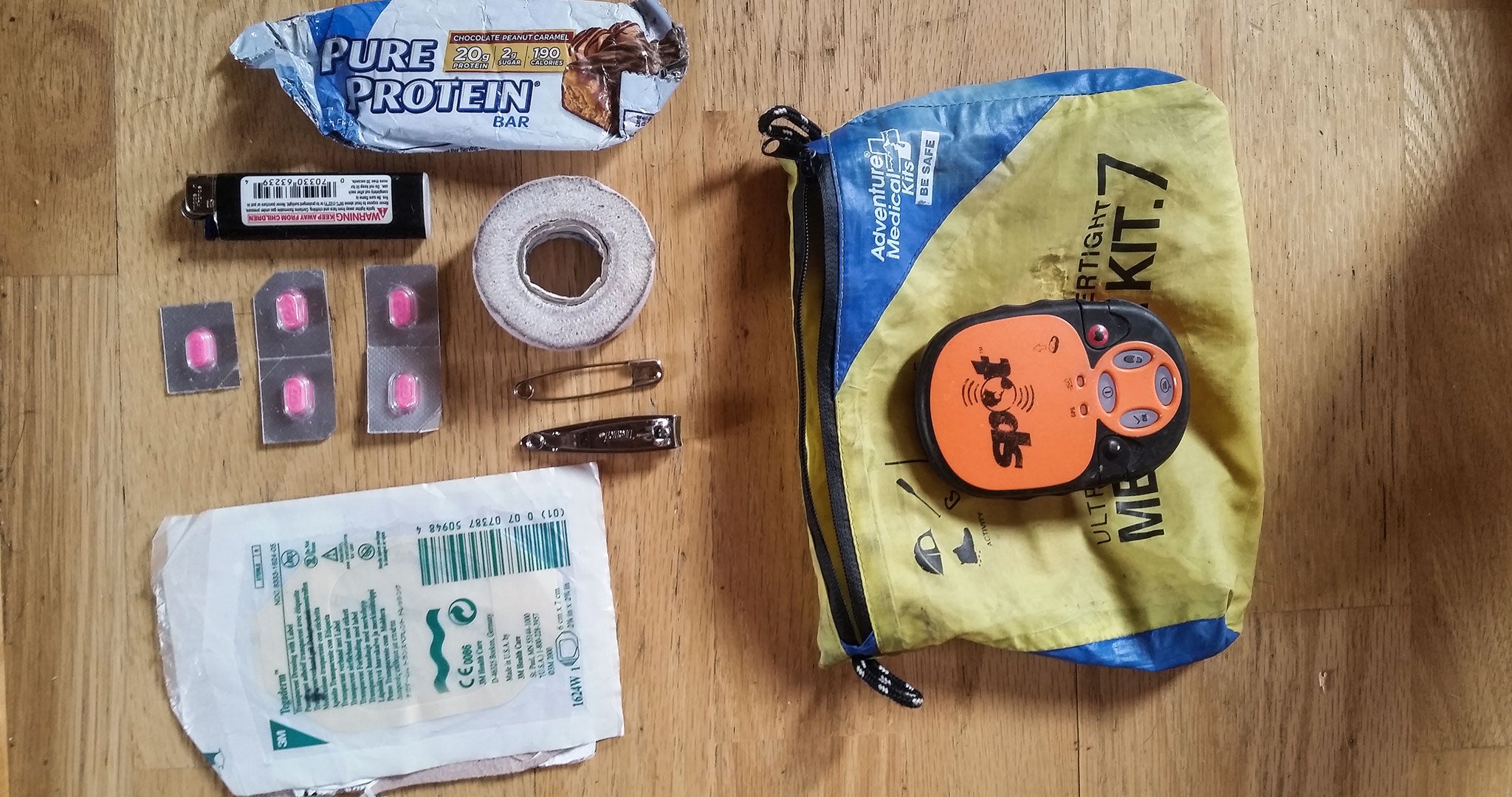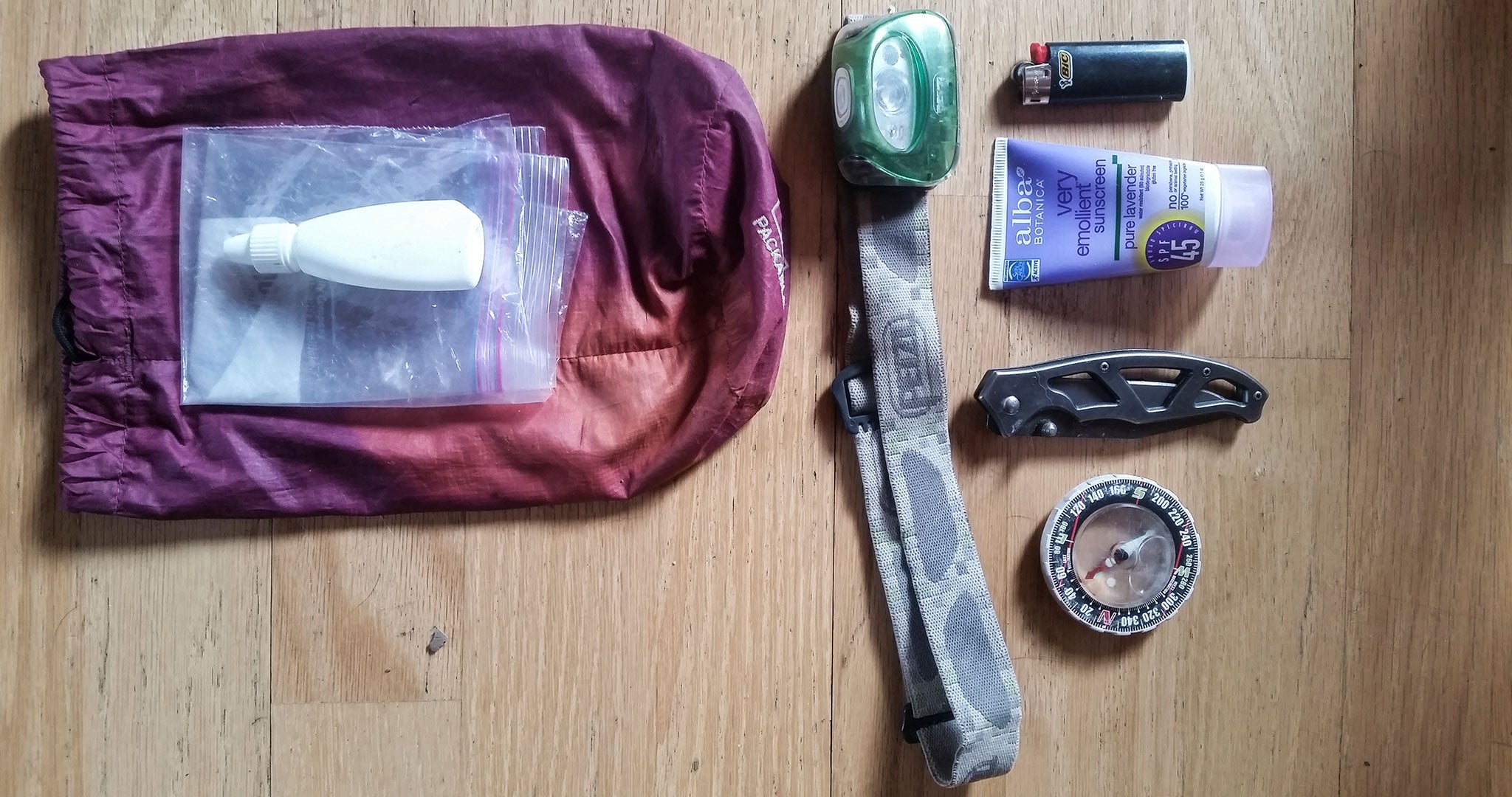A Season-to-Season Guide to Ultralight Day Hiking Gear Lists
Words & Photos by Annie MacWilliams
Add Four Season Functionality to Your Gear Lists for Day Hiking
Since it’s not always an option to take five-month long hikes, I have really come to enjoy fast and light day hikes with lots of elevation and long miles. Having a system dialed in makes it easy for me to grab the right gear for the day and hit the trails without much thought, a nice perk when you’re short on time and trying to spend as much of it outside as possible.
For long-distance thru hikes, I’m used to having limited gear options–you essentially pick one kit for five months of travel and hope it works in everything from the desert to the high alpine. With day hiking or quick overnights, it’s different. I modify what I carry continually throughout the seasons to ensure maximum comfort and minimum weight.
My day hiking gear lists include “standard items,” which I always carry. Then there are the “conditional items” that I need for the specific season or activity.
Regardless of the time of year or type of trip I’m doing, the first items I throw in my Daybreak ultralight day pack are a medical kit, ditty bag, snacks, water and an insulating layer.

Medical Kit:
Each person has her own preferences for medical kits. Over the years, mine has slowly grown with each incident I’ve run into in the wilderness. I saw Benadryl save someone’s life on the Inca Trail who was going into anaphylactic shock, so now my kit has Benadryl. I’ve had to call a helicopter for a solo hiker on the PCT going into decompensated shock. Luckily I had cell reception. But now I carry a SPOT Personal Locator Beacon (PLB) as a worse case scenario option, since the places I like often do not have reception. I let my backcountry partners know that I’m carrying one, and where to find it if something incapacitates me. I stash a spare lighter, and a nasty protein bar that I will only be willing to eat in an emergency. Often there is a safety pin for blister care, and my winter day hiking gear list includes extra Tegaderm for screaming heels on longer touring days. Sometimes I carry tape and a nail trimmer for battered climbing hands, and sometimes a military-style tourniquet and soft bandage for ski tours where there could be some high consequences and long extractions. Occasionally I stock Ibuprofen, sometimes band-aids, often neither. I usually have duct tape around a bottle or pole.
Additionally, I have Wilderness First Responder training, an invaluable resource for learning ways to help yourself and your companions when definitive care is a long way away. I can’t speak highly enough about this training, and urge anyone that likes to play outside to know how to handle emergencies. I’ve said it before, and I’ll say it again, your brain is your best resource, so you might as well fill it with everything you can. Medical training is invaluable and could help make sure you have many more adventures.

The Ditty Bag:
My standard day hiking gear list also includes a ditty bag that suffers endless modifications. The “usuals” include my headlamp, another lighter, sunscreen, a small knife, an eyedropper of bleach for water purification and a compass. Sometimes I bring a small bundle of p-cord, and I usually bring a spoon.
Food & Water:
I tend to get “hangry” quickly, so it’s imperative to regularly eat and drink in the backcountry to avoid bonking.This past year I started carrying a hydration bladder for the first time. I didn’t hate it, but I dislike the inability to gauge how much water I have left. I find that the inconvenience is outweighed by the fact that I find myself drinking more water than I typically do, a huge benefit for me, as I often don’t stop frequently enough to swig from a bottle. I often also carry a soft, packable backup bottle in the summer. For snacks I like simple, easy to eat on the go snacks with limited ingredients, I’m a big fan of Larabars, Kind Bars and Food Should Taste Good bars, along with ProBar Bolts, Clif Bloks, Justin’s Nut Butters and lots of chocolate. Or I grab whatever leftovers are in the fridge: cupcakes, bacon, fresh fruit, brie. Day hiking is awesome.
Clothes:
As I already alluded to, I’m a wimp when it comes to being cold, so I have learned to always bring an insulating layer. If it looks like rain, I opt for a synthetic down that can get wet and retain warmth. But thankfully Utah is pretty dry, so I frequently grab a lighter down coat. I pack this layer in every season, so every day hike. No one ever plans for an unexpected night in the backcountry, and weight-wise it’s a pretty harmless layer of insurance. Plus, it makes hanging out on summits much nicer. You worked hard to get up there; throw a layer on and enjoy your leftovers!
The Conditional Gear:
Conditional gear is gear I need during specific seasons, and it may or may not include rain gear, gloves, warm hat, extra layers, microspikes, TP, maps and backcountry ski gear (shovel, probe).
Ditty Bag Mods
In the winter I add a snowboard tool, zip ties, Hot Hands or Toe Warmers, as well as spare AAA’s that can go in my beacon, PLB or headlamp to my ditty bag.
Food and Water Subs
Everyone knows you burn more calories in the cold, but it can be hard to estimate exactly how many. I err on the side of packing plenty to keep me fueled up and warm. The other main change I make is that I sub out my soft, collapsible auxiliary water bottle for a hard, insulating one in winter. One other thing to keep in mind on this front is that my the hydration tube on my water bladder will occasionally freeze, but I try and remember to backflow the tube after each sip.
Winter Clothing Subs
It gets cold and dark fast in the winter, and I’m not a fan of either when they aren’t a part of the plan. I like long, hard days, but I like to make sure that I have everything I need to stay comfortable. The first additions are always rain gear, gloves and a hat.
Other Conditional Gear:
If the trails are icy, I’ll bring microspikes, and if there’s snow the toilet paper can stay home. If I’m ski touring, I always have my shovel and probe, and I can easily fit my wet skins in the outer pocket of my Daybreak.
Other things I consider when choosing my conditional gear might be whether or not the hike is one I’m familiar with. If so, I probably don’t need a map. If not, a paper map is good to have when the phone dies from taking too many selfies or the GPS doesn’t work any longer. I really like the ability to utilize my phone as a GPS since it serves multi purposes as a camera, for music or for emergencies. Unfortunately, batteries seem to drain quickly when you need them most.
One important thing to consider is that conditional day hiking gear can go both ways. For instance, for hot, Southern Utah hiking with clear sky days I almost never need rain gear, gloves or hats. But for fourteeners in Colorado, I always bring all three–even in the summer.